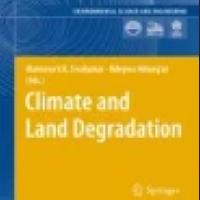Resumen
-
The Program to Combat Desertification and Mitigate the Effects of Droughts in South America is being implemented at a regional scale. The general objective is to provide a sound basis for addressing dry land degradation and drought in Argentina, Brazil, Bolivia, Chile, Ecuador and Peru, in accordance with the UNCCD principles. Other countries, such as, Colombia, Paraguay, Uruguay and Venezuela have manifested their interest in participating in the Program and to share experiences and expertise among the countries in the Region. The Meso-America countries, are also willing to engage in the same approach of the Program, significantly expanding the basis for south-south and north-south cooperation. In Latin America, the vast majority of the 34 countries that have adhered to the UNCCD have elaborated their National Action Programmes (NAP’s) in accordance with their commitments towards the Convention. Currently, a number of them are engaged in the process to have their respective NAP’s fully implemented and guided by national policies targeted to control the continuous land degradation associated either with natural climatic variations or anthropogenic activities.
The main objective of the Convention is to secure the long-term commitment of its Parties to combat desertification and mitigate the effects of drought through effective action at all levels, with a view to contributing to the achievement of sustainable development in affected areas. The Convention calls on the affected countries to develop National Action Programs to Combat Desertification and Drought (NAPCD), within the framework of national development plans. These include strategies and priorities, paying special attention to the related socioeconomic factors, addressing the underlying causes of dry land degradation, promoting the participation of local populations particularly women and youth, and providing an enabling environment by issuing as necessary new laws and policies. Through the Program a set of socio-economic and environmental indicators were identified in all participating countries and a common base line of indicators was derived in order to establish a common ground for the simulation of future scenarios. This is particularly of importance regarding the climate indicators such as temperature, precipation and evaporation that constitute components of the aridity index used to delimit the arid, semi-arid and the dry sub-humid areas in the region. The global warming trend is likely to change the distribution patterns of such indicators and redefine the boundaries of the aforementioned areas. These changes, as predicted by future scenarios, should be taken into account in NAP implementation and be given due consideration in the formulation of public policies towards combating desertification.
